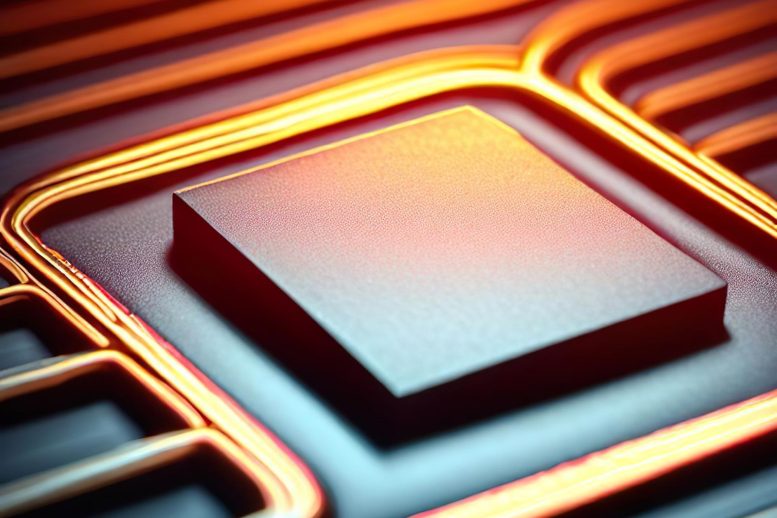
Researchers have developed a new nanocomposite film using an electrospinning method that could potentially solve the problem of heat generation in compact, powerful electronics. The heat, which can cause slower processing and abrupt shutdowns, is effectively dissipated by the film, four times more efficiently than similar materials. (Artists’ concept of “heat highways” for electronics.)
A research team has developed a nanocomposite film that dissipates heat four times more effectively than existing materials, offering a potential solution for overheating in compact electronics. This was achieved through a two-solution coaxial electrospinning method, creating a “highway” of heat distribution using polyvinyl alcohol and thermally conductive nanodiamond material.
As smart electronic devices become smaller and more powerful, they can generate a lot of heat, leading to slower processing times and sudden shutdowns. Now, in ACS Applied Nano Materials, researchers use an electrospinning approach to produce a new nanocomposite film. In tests, the film dissipated heat four times more efficiently than similar materials, showing that it could one day be used to keep electronics cool.
Smaller and smarter electronics have revolutionized many aspects of life, from communication to medicine. But shrinking sizes mean that these devices concentrate heat in smaller areas, which can cause lagging computing speeds and even force devices to completely shut down unexpectedly to prevent damage.
To dissipate this heat, researchers are turning to nanocomposite materials that contain a flexible polymer and thermally conductive filler. A simple way to make nanocomposites is by electrospinning, in which a solution of polymer and filler is jetted out of a syringe through an electrically charged nozzle, forming fibers that build up into a thin film. While simple, electrospinning from a single solution, or uniaxial electrospinning, makes it difficult to control the material’s properties. So, Jinhong Yu, Sharorong Lu and coworkers used a two-solution technique, called coaxial electrospinning, to better control the fiber design and improve heat dissipation of a new nanocomposite.
The researchers made one solution with their selected polymer, polyvinyl alcohol, and a separate solution with the thermally conductive filler, a nanodiamond material, to produce the new nanocomposite. By fitting a syringe of each solution onto a nozzle that combined the two, the researchers made fibers with a polyvinyl alcohol core and nanodiamond coating, rather than a random distribution of the two components. The researchers say the coated fibers act as a “highway” to direct heat, like traffic, along and across the fibers throughout the film. In tests, the new materials dissipated heat better than those made with the traditional nozzle and were four times as thermally conductive as previously reported nanocomposites. The researchers say that these films could one day be used to keep tiny electronics working hard while staying cool.
Reference: “Enhanced Thermal Conductivity of Nanodiamond Nanosheets/Polymer Nanofiber Composite Films by Uniaxial and Coaxial Electrospinning: Implications for Thermal Management of Nanodevices” by Zhouqiao Wei, Ping Gong, Xiangdong Kong, Maohua Li, Jingzhen Cheng, Hua Zhou, Dacheng Li, Youming Ye, Xiang Lu, Jinhong Yu and Shaorong Lu, 17 May 2023, ACS Applied Nano Materials.
DOI: 10.1021/acsanm.3c00591
The authors acknowledge funding from the Key Laboratory of New Processing Technology for Nonferrous Metal & Materials and the Ministry of Education/Guangxi Key Laboratory of Optical and Electronic Materials and Devices.



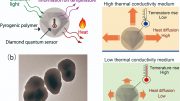
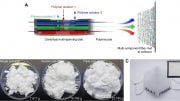
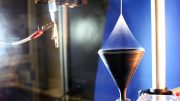
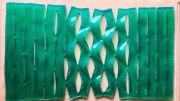
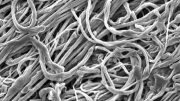

Be the first to comment on "Nanodiamond “Heat Highways” To Keep Electronics Cool – Dissipates Heat Four Times More Effectively"